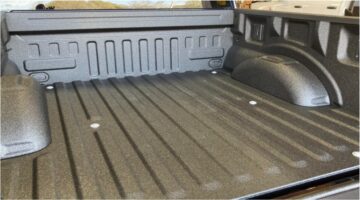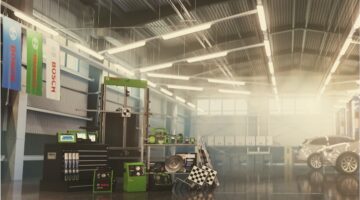When we talk about clear optical cars for the automotive industry, we generally talk about a limited number of things. There aren’t too many transparent components you need in a car. We can actually list them all right now: car light lenses and windshields. That’s it. Not much but this topic warrants a whole article because of the complexity posed by the technical requirements. So, if you want to make custom car lights or are in the process of prototyping cars, this article may be useful for you to understand how that’s actually done.
We are going to forgo the windshield components here in this article because they are mainly made of laminated glass and do not require a lot of processing. You bend the glass under high temperature and cut out the fitting piece.
Now, car light lenses are a whole different thing. No one really makes them from glass anymore and their shape is a thousand fold more complex compared to windshields. The amount of effort to create them is even more staggering compared to the complexity of their form. Why is that? It is because transparent plastics are not actually transparent. You have to polish them to an unimaginably even surface condition or you’ll get some matted zones that’ll look bad. And when making a prototype you just don’t have that amount of time to polish the part only to find you’ve made a mistake somewhere along the path and have a do over. That’s why I think making optical prototypes is a thing you should leave to specialists.
Again, simple manufacturing specialists won’t cut it in this case, you need to look for people who have done this type of job on a stable level. Let’s quickly jump into that topic with this short 3-minute article on optical prototyping.
Which Material to Choose for Optical Prototyping
Before we jump into the process, you have to understand, there are three materials available for the light prototypes: PMMA (acrylic glass), PC (polycarbonate) and ABS plastics. All three materials are theoretically viable for the purpose but the best one should without a doubt be PMMA. It is much easier to process and to achieve the desired surface finish. However, PC has better functional properties and are more often installed in cars. So if you have functional tests to undertake, you may have to encounter this one. The problem with PC is that the surface finish may be irregular even after the finishing operations. So , if you can, avoid it. ABS is something in-between but is also a viable option for functional optical parts
The General Workflow to Create Optical Prototypes for Cars
Making optical prototypes is an even more complex job because you don’t have special tooling or tools for the job. You have to work in worse conditions compared to mass production and yet you need a high quality part with mirror-like clear surface finish in the shortest amount of time or your competitors get ahead of you. Let’s see how the manufacturing process for optical components works with different materials and base prototyping choices.
There are only 4 base prototyping processes for headlight prototype creation. They have proven again and again to provide the best results in the shortest amount of time for the complex geometries the lighting prototypes require. However, every manufacturing process of transparent parts comes to one thing: hand polishing. Each process requires a different number of polishing steps. Why is that? It’s because different base processes offer different surface clarity. And here we come to the point. The end quality of the automotive lighting prototypes is determined by the quality of hand polishing steps. Below, you can see a table with the average number of polishing operations needed before the part is ready for each prototyping process.
| Base Process:
3D-printing |
Base Process: Silicone Molding | Base Process: CNC machining | Base Process: Injection Molding |
| Requires Postprocessing through CNC machining | 6-7 steps of polishing | 3-4 steps of polishing | 2-3 steps of polishing |
| 4-6 steps of polishing |
It is also important to note that different base processes can provide limited car lens forms. The best freeform process is 3d-printing and CNC milling. It can get you any form you can think of but the printing zone can be limited so if you have a really long or large lens, you will have to split the part and then glue the pieces together. The same technique is viable for other processes too but because they all have technological limitations unlike 3D-printing. Now the joining of transparent parts is really complex and you have to choose the joint area based on the relative position of the light source. Apart from that, you have to use special glue and have the joint surfaces align perfectly.
Polishing Automotive Transparent Parts: Why is it so Complex
Let’s look at the most important step to produce Headlights and Tail Lights Prototypes. Why do you need that many steps to achieve transparency and what does each step entail? So, each polishing step uses a different abrasive tool. First you go with a coarser disk or a plate and with each step you pick up a smoother abrasive. Each following step, the same motion will shave off smaller and smaller amounts of material until your working tool is a piece of cloth and a paste with microscopic hardened particles. So, it seems easy so far, right? But that is true for simple flat plastic plates. Car lights are curved, they have lots of inner surfaces and polishing them evenly requires a lot of skill and effort. Among the common mistakes an inexperienced polishing technician can make are:
- Choosing incorrect tools. Both the bonding of hard particles and the material of those particles are important
- Moving the tool over the part too fast. You can’t just move the tool over the part as fast as you can, you’ll just damage the part
- Incorrect motions. Every part has its grain and you have to take it into account when polishing










